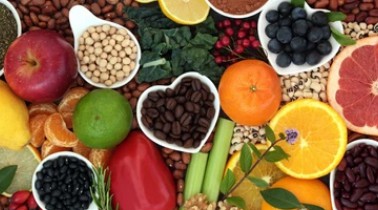Flavonoids compounds mainly refer to a class of compounds with chromone ring and benzene ring as the basic structure of the general term, it is a plant in the long-term process of natural selection of some of the secondary metabolites, widely present in vegetables, fruits, pasture, and medicinal plants. Flavonoid quantification contributes to further understanding of the bioactive components of plants and promotes efficient utilization of plant resources.
Lifeasible specializes in plant research, we provide comprehensive plant research that has helped the development of plant science research, in the quantitative detection of flavonoids, we continue to optimize our technical system, aiming to provide more sensitive and accurate quantitative detection of flavonoids services.

Ultraviolet-visible spectrophotometry (UV-Vis) is one of the most commonly used methods for detecting flavonoids. The method is based on quantitatively analyzing the characteristic absorption peaks of flavonoids in the UV or visible region. This method is simple, rapid, and inexpensive in quantifying flavonoids and can be directly applied to plant extracts and pharmaceutical preparations.
High-performance liquid chromatography (HPLC) is a highly efficient method for separating and quantitatively analyzing flavonoids. HPLC enables accurate quantitative analysis by separating different flavonoids and their derivatives. HPLC can efficiently separate a wide range of flavonoids in complex samples and quantify a wide range of flavonoid components simultaneously. We can provide structural information when combined with mass spectrometry detection.
Gas chromatography (GC) is commonly used to detect highly gaseous flavonoids and is particularly suitable for analysis in gaseous or volatile samples. By combining GC with mass spectrometry (MS) (GC-MS), it is possible to provide highly sensitive results for flavonoid analysis. This method is highly sensitive and capable of detecting low concentrations of flavonoids and can be used to analyze complex plant samples or volatile plant components.
Mass Spectrometry (MS) offers significant advantages in detecting flavonoids as a sensitive and high-resolution analytical tool. Through mass spectrometry, the molecular weight and structural information of flavonoids can be accurately obtained to further identify flavonoid components in complex samples. MS has very high sensitivity and resolution and provides molecular structure information, making it suitable for the analysis of complex samples.
 Fig.2 Our service process. (Lifeasible)
Fig.2 Our service process. (Lifeasible)
Relying on advanced technology and years of service experience, Lifeasible is committed to providing high-quality flavonoid quantification services to help customers' project research. If you are interested, please feel free to contact us.